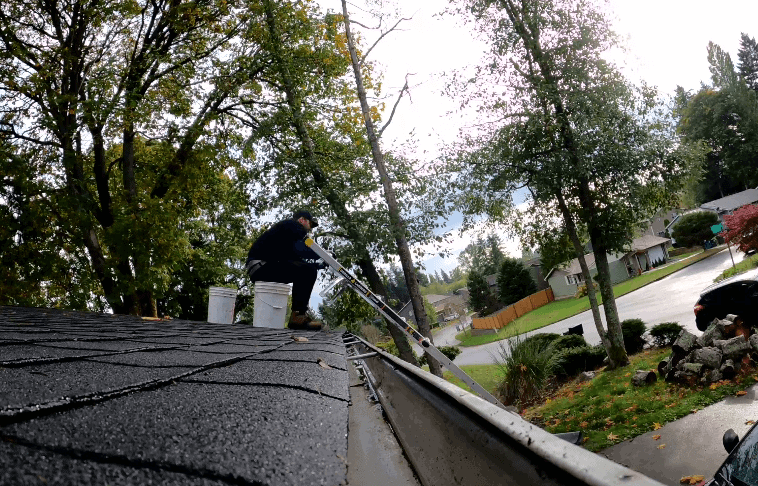In order to maintain the structural integrity of your home, a gutter is a crucial component. Although gutters are a common feature of homes, you might prefer a gutter option that is less work to maintain and looks nicer. Rain or stormwater is kept away from the foundation of your home by gutters, which deflect and collect the water to prevent problems with the walls or foundation of your home.
The majority of gutters require more frequent care since they must be kept free of debris at all times to avoid rotting, clogging, leaks, or harm to your home. Actually, water from the gutters can dribble over the walls and seep into your basement and crawl spaces.
As stated by AC Advanced Gutter Cleaning, Traditional gutter systems are fairly common, but they can look heavy and detract from the aesthetics of your home. This explains why so many individuals are researching alternatives to the gutter.
Your gutters may crack if you let them fill up with leaves, twigs, or other debris. They can separate from the house and drop from the edge of your roof. They affect your home’s aesthetic appeal as well. The good news is that there are gutter substitutes that have superior aesthetics and require less upkeep. The most well-liked choices will be discussed below.
- Rain Chains
Rain chains, known to the Japanese as Kusari Doi, are a magnificent example of how to integrate form and function. These gutter alternatives have been used by the Japanese for generations, and they continue to be widely used today. This is a more attractive replacement for your more conventional gutter and downspout setup. They try to gather water from the roof before sending it to fall into a barrel-shaped underground storage facility.
Because it has attractive cups strung together in a line to transfer the water from the top to the bottom of the chain while slowing it down, this gutter substitute is able to function. When you think about gutter alternatives, rain chains are a magnificent combination of functionality and aesthetics. They come in a vast variety of different forms. By swapping out the downspout, you can use them in addition to a conventional rain gutter, maximizing their advantages.
- French Drain or Ground Gutters
For anyone looking for a non-obtrusive gutter solution, ground gutters are fantastic. Without much effort on your part, they protect the walls and foundation of your house. Simply dig a V-shaped trench at the drip line to install them. The drip line is the spot where rainwater from your roof meets the ground as it descends to the ground. The trench is lined with a perforated pipe at the bottom and a waterproof lining. You then add gravel or stones to fill it in. You can install a pipe network around your home, and this arrangement is sometimes referred to as a French drain.
- Rain Dispersal System
To lessen the force or impact of any pouring rainwater, a rain dispersal system works by breaking it into many smaller drops or rivulets. They are widely available at your neighborhood hardware or home improvement stores. This well-liked alternative to gutters can be equipped with an angled louver system that will divide any falling rain into smaller streams and direct them into a band. This method has the benefit of requiring less maintenance, so you won’t have to worry about clearing out blocked gutters or dissolving ice dams before they cause harm.
- Drip Path
A drip path is a paved walkway that is placed directly beneath the edge of your roof in order to catch any water that may fall from it. To prevent soil erosion brought on by water dripping from the roof, you typically build these routes using blocks or bricks that you bury in the ground. The hard surface will prevent the water from penetrating the soil, and the bricks or blocks are positioned at an angle to direct the water away from the house or structure.
Another option for this gutter substitute is to install a concrete drop apron that will help drain the water away. Place it about six inches from the foundation. When you use sloping stones, this works fantastically. In order to create a drip trail, you can also lay grasscrete. Your drainage zones will be able to grow grass as a result. Pebbles or larger stones could be used to create a walkway all around your house. Be aware that in order to accomplish this, you will need to install an underground drainage system so that you can direct your water runoff.
- Drip Edges
A metal strip called a drip edge is attached to the margins of your roof. It consequently functions as an additional barrier that slows the water’s forward motion before it touches the ground. They also function to prevent water from reaching too close to your house’s walls. This alternate gutter is installed between the roof deck and shingle layers, which keeps water from penetrating into the wood beneath the shingles.
This gutter substitute so helps to safeguard the base of your property and make sure that water doesn’t unintentionally splash up and damage your walls or promote the spread of mildew. To increase its effectiveness in deflecting rainwater, you may also combine this gutter substitute with a rain gutter.
Alternatives to Guttering are Highly Effective
Many individuals hold the false belief that gutters are not necessary for your home. Additionally, they think that if it doesn’t rain much where you live, you can forego installing them. This, however, is untrue because your walls or foundation can be harmed by water without much water.
